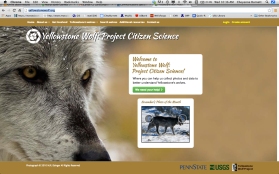
ResourcesUsing citizen science to better understand Yellowstone’s wolves

Project:
After recognizing the wealth of information gathered by park visitors, photographers, and regular wolf-watchers in Yellowstone National Park, researchers decided to create an official venue for park visitors to contribute to the long-term data collection on Yellowstone’s wolves. The yellowstonewolf.org website provides a platform to collect visitor photographs of wolves with accompanying data (including date, location, unique animal ID if known, and wolf pack if known) to help answer questions about pack compositions, individual life histories, and individuals’ infection status with sarcoptic mange. Yellowstone provides a unique opportunity to study disease dynamics in a canid species non-invasively because the wolves are highly visible and infection status with mange is observable due to the hair-loss resulting from infection by the mange mite. The website is designed to collect citizen science data as well as provide a dynamic and educational tool for the wolf-watching community and general public. The website displays photographic histories of individual wolves, maps of current and historic territory ranges, information on pack compositions and genealogy, as well has highlights some of the on-going research projects. This is a collaborative project with Penn State University, US Geological Survey Northern Rocky Mountain Science Center, and the Yellowstone Wolf Project.
Researchers:
Emily Almberg – Department of Biology, Penn State University, USA
Links:

